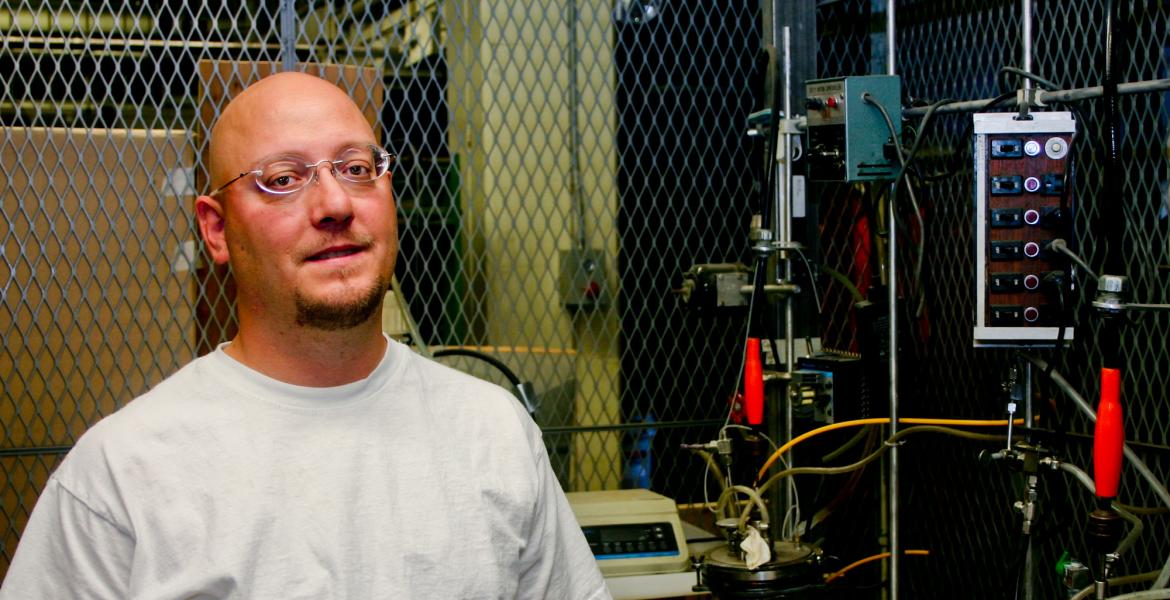UA Research Indicates That Government Regulation of Greenhouse Gases May Increase Global Climate Change
Paul Blowers, associate professor of chemical and environmental engineering, and chemical engineering senior James Lownsbury recently cast doubt on the global warming credentials of a new group of chemicals called hydrofluoroethers, or HFEs.
Their research suggests that these new chemicals, originally thought to have low global warming potential when used as refrigerants, might actually lead to increased greenhouse gas emissions. Their conclusions were published recently in a paper in Environmental Science & Technology, the leading journal for the environmental science and engineering field.
Blowers and Lownsbury agree that HFEs have a low global warming potential in terms of their chemical properties studied in isolation. They contend, however, that the true global warming potential of an HFE can only be determined by a complete analysis of its entire life cycle from manufacture through use to disposal.
For instance, an HFE could have low global warming potential but the refrigeration or air-conditioning system in which it is used might have poor energy efficiency. The source of the electricity to run the system is also a factor in determining environmental impact.
More Data Needed
Blowers and Lownsbury say in their paper that refrigeration system compressors use about 70 percent of the total electricity requirement. Quoted in the journal’s comment section, Blowers said: “What’s often hidden is the indirect emissions due to the efficiency of the equipment and the chemical, and the need for electricity to run compressors or pumps, or to deliver water.”
Blowers adds that geographic location affects greenhouse gas emissions, and says that current refrigerants such as hydrofluorocarbons, or HFCs, are better for the climate than the HFE they tested wherever electricity is produced mostly from coal.
However, if renewable or nuclear power is used, the HFE causes lower greenhouse gas emissions than HFCs. Blowers says the “one-size-fits-all approach” to regulating chemicals and achieving sustainability will not work. He also says that the paucity of data available for these new chemicals means it is impossible to measure their environmental impact.
This lack of data forced Blowers and Lownsbury to use computational chemistry to obtain some of the physical data, such as heat capacity, needed to perform the analyses because no experiments had been done to provide it.
Their current research is evaluating dry cleaning systems, window air conditioners, and automobile cooling systems to see if results are similar for those cases. This involves designing the process, understanding how the technologies work, and determining the physical properties of the chemicals in order to do the evaluation.
Blowers also notes that the amount of energy required to manufacture a chemical needs to be considered when trying to establish its effect on climate. “What if making the HFE used up 100 times more energy than making up the HFC? Or what if it’s the opposite?”
Footnote
Meet the New Gas, Same as the Old Gas
In the 1970s scientists linked chlorofluorocarbons, or CFCs, to a hole in the ozone layer. Thanks to the CFCs contained in coolants, aerosols, solvents and pesticides, we were being exposed to harmful ultraviolet radiation from the sun.
These findings led to the adoption of the Montreal Protocol in 1989 to phase out the use of ozone-damaging chemicals such as CFCs. Among the chemicals that replaced CFCs were hydrochlorofluorocarbons, or HCFCs.
Then scientists became concerned about the part that HCFCs, which are greenhouse gases, were playing in global warming. So the parties to the Montreal Protocol agreed to phase out HCFCs.
In many cases, HCFCs have been replaced by hydrofluorocarbons, or HFCs, which are also greenhouse gases. In 2009, the EPA ruled that HFCs are health hazards and contribute to climate change.
Currently, HFCs are not regulated, and a big increase in HFC emissions is expected. If HFCs do become regulated, the main contenders for their replacement are hydrofluoroethers, or HFEs.
The environmental effects of HFEs are unknown.


